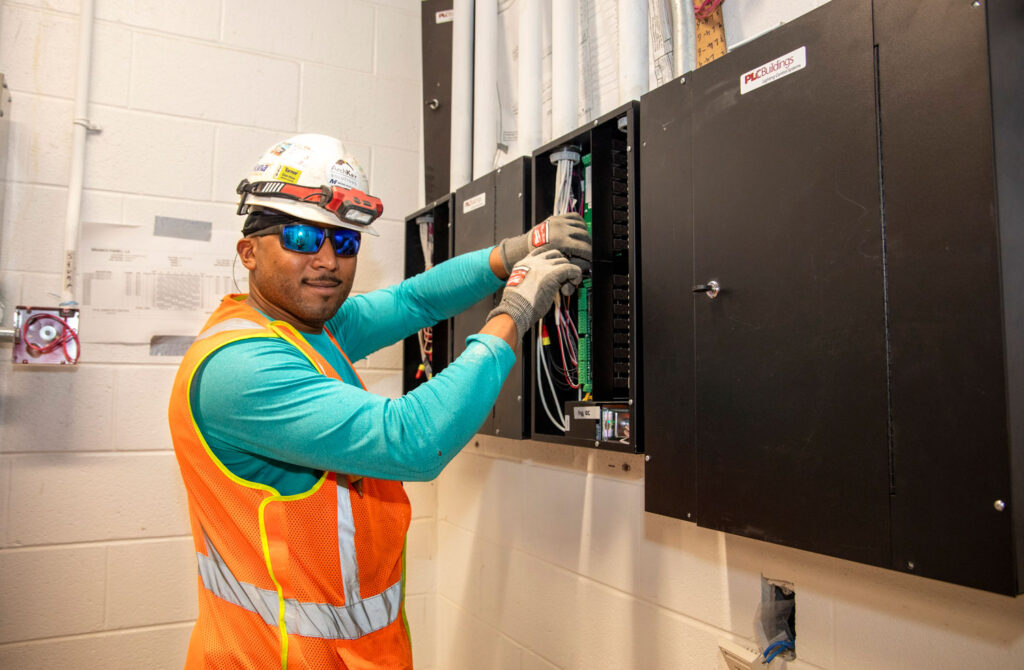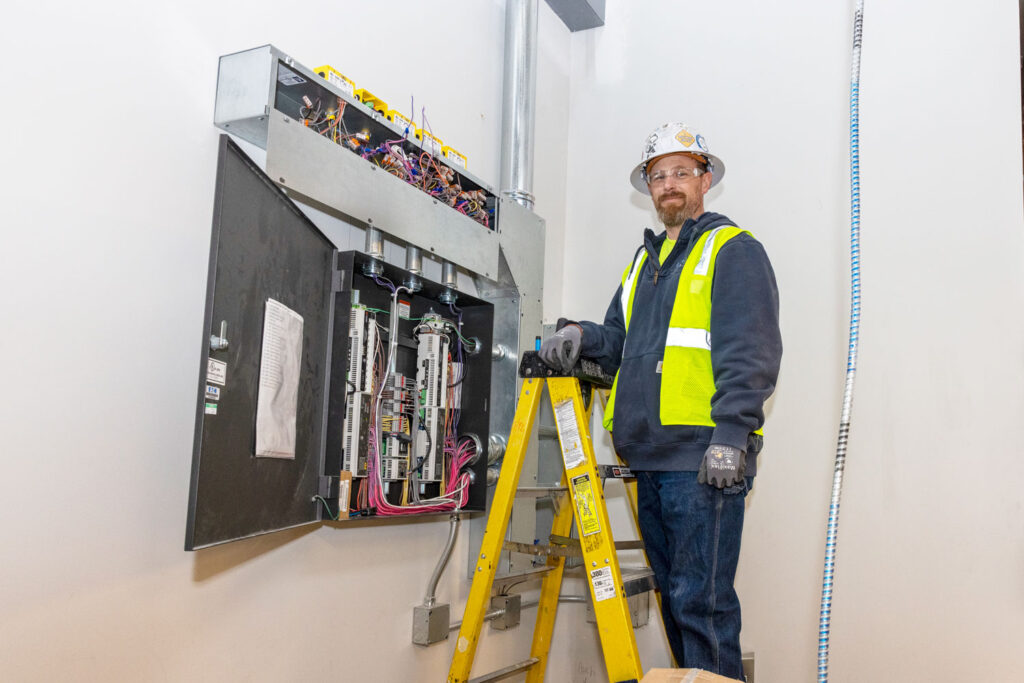IBEW Local 26: A Commitment to Workplace Safety
Explore our resources, tools, and initiatives dedicated to ensuring the health and safety of our members on every job site.

announcements and updates
Stay informed with the latest safety news, upcoming events, and important updates from the IBEW Local 26 Safety Committee.
Safety Education and Awareness
A Safety Stand-Down is a voluntary event where employers pause work to engage directly with employees about safety. While the primary focus is on “Fall Hazards” and reinforcing the importance of “Fall Prevention,” employers whose work does not involve fall risks can use this opportunity to discuss other job hazards, protective methods, and the company’s safety policies and goals. It also serves as a platform for employees to communicate with management about the hazards they encounter on the job.
Our trade is rewarding but carries inherent risks. Working with electricity, in challenging environments, and alongside numerous colleagues demands unwavering commitment to safety. There’s no room for shortcuts or errors; a single misstep can have irreversible consequences. Safe work practices must become habitual to ensure every member returns home safely each day. Electrical hazards, while not the most frequent, are often the most fatal and costly. Over the past decade, more than 30,000 workers have suffered electrical injuries in the U.S. These incidents not only disrupt lives but also impact employers’ productivity. The good news: most electrical injuries are preventable. By diligently following jobsite safety rules and policies, we protect ourselves and our coworkers.
OSHA is increasing inspections of all open trenches due to a rise in fatalities. Every trench is treated as a collapse risk, and employers must follow Subpart P safety standards.
The new National Emphasis Program replaces the 1985 version, with 104 deaths reported in just 2015–2016. Employers have a 90-day grace period to train workers before citations begin.
Inspect trenches daily and after weather.
Provide safe entry/exit and test air quality.
Keep equipment away from edges.
Always have a trained, competent person on-site.
Train now. Be proactive.
Prevention: Water, Rest and Shade
Employers must provide cool, accessible water and encourage workers to drink at least 8 ounces every 20 minutes, even if they are not thirsty. For jobs lasting more than two hours, electrolyte drinks should also be available, as water alone cannot replace salts lost through sweat. Without proper hydration, workers risk muscle cramps and serious health issues. Personal protective equipment like respirators or impermeable clothing can raise the risk of heat illness, making regular hydration even more important.
When heat stress is high, employers must require workers to take regular breaks. As heat stress increases, breaks should become longer and more frequent. In general, hourly breaks are needed when heat stress exceeds limits listed in Table 2 on the Heat Hazard Recognition page.
Breaks should allow enough time for recovery, which depends on heat levels, work intensity, and personal risk factors. Cool rest areas help workers recover faster; without one, breaks should be longer.
Skipping breaks is dangerous in hot conditions. Employers must ensure workers take all recommended breaks.
NIOSH and ACGIH provide guidance on work and rest schedules based on workload and WBGT.
When heat stress is high, employers must require workers to take regular breaks. As heat stress increases, breaks should become longer and more frequent. In general, hourly breaks are needed when heat stress exceeds limits listed in Table 2 on the Heat Hazard Recognition page.
Breaks should allow enough time for recovery, which depends on heat levels, work intensity, and personal risk factors. Cool rest areas help workers recover faster; without one, breaks should be longer.
Skipping breaks is dangerous in hot conditions. Employers must ensure workers take all recommended breaks.
NIOSH and ACGIH provide guidance on work and rest schedules based on workload and WBGT.

Heat-related Illness, from the National Safety Council:
The body burns calories and produces heat to maintain a temperature of 98.6°F. In heat or during hard work, it cools itself by sweating and dilating blood vessels. Sweat cools the body as it evaporates, and dilated vessels bring heat to the skin’s surface.
Cooling fails when the air is hotter than the body or when humidity slows sweat evaporation. Heavy clothing or gear also blocks cooling. This makes heat illness a risk in any weather.
For tips on staying cool and spotting symptoms early download this PDF in English and for Spanish download this PDF.
OSHA-NIOSH Heat Safety Tool App
The OSHA-NIOSH Heat Safety Tool App uses heat index (HI) values based on shade and light wind; direct sun can raise HI by up to 15°F. HI works for most outdoor jobs, but WBGT-based limits are better when available. Physical exertion also adds heat stress, so employers need strong prevention programs. Keep the app updated as OSHA and NIOSH review new data.
Essential Safety Tools and Resources
Mental Health Matters: Body and Mind Together
If you’re having trouble coping with work-related stress, talk with someone who can help. www.crisistextline.org
Call the new three-digit dialing code 988 or find online chat at 988lifeline.org/chat
Para obtener información en español, llame al 1-888-628-9454 o visite el sitio web
Information Regarding Coronavirus COVID-19 Pandemic*
NSC Launches Free First Aid App
HoT work calculator tool app: Eaton’s Bussmann Series FC2 Available Fault Current Calculator is a user-friendly tool designed for contractors, engineers, electricians, and electrical inspectors.
Local 26 Forms Safety & Health Committee
In line with the IBEW Constitution and our Inside Wireman’s Agreement, Local 26 is forming a Safety and Health Committee, chaired by Safety Coordinator Richard Wilkinson. The committee will investigate serious incidents, promote safety, support injured members, and work with contractors to reduce risks across Maryland, Virginia, and D.C.
Member participation is key—we’re seeking volunteers to represent our full jurisdiction. The committee will meet regularly, review OSHA standards, and help ensure safety remains a core part of our culture and work.
Protecting our members is essential. No one should have to choose between their safety and their job.


